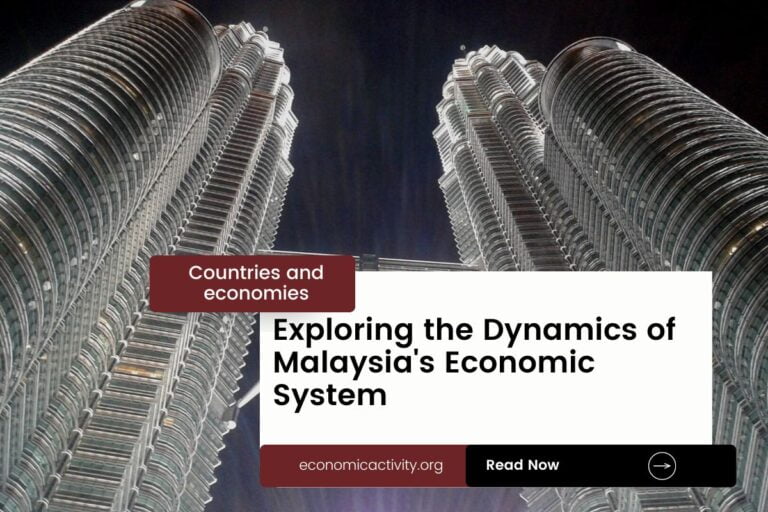Burundi, with a population of 12,889,576, is ranked 75th in the world, just behind Benin. Located in East Africa, it covers a total area of 27,830 square kilometers, ranking 136th globally, below Equatorial Guinea.
Burundi’s economic position in 2022 is reflective of its challenges, with a GDP of $3,338,722,827.66 placing it at a rank of 163. It is closely behind Andorra, which has a GDP of $3,352,031,094.23. The GDP per capita in Burundi is $259.03, ranking it at 187, just behind Afghanistan with a GDP per capita of $355.80.
Despite facing economic obstacles, Burundi continues to strive for growth and development in the global economic landscape.
What are the economic activities of Burundi?
- Primary activities: 39.5% of GDP.
- Secondary activities: 16.4% of GDP.
- Tertiary activities: 44.2% of GDP.

Primary Sector of Burundi
Burundi’s primary sector, mainly agriculture, thrives due to its favorable climate and abundant natural resources. With 81.89% of the land dedicated to agriculture, the country produces a variety of crops like cassava, bananas, and sweet potatoes. Despite contributing 39.5% to the GDP, agriculture remains crucial for the economy.
The top ten agricultural products include vegetables, beans, maize, and sugarcane, showcasing the sector’s diversity and importance.
With a diverse geological landscape, the primary sector thrives in Burundi with abundant natural resources such as nickel, uranium, rare earth oxides, and more. These resources play a vital role in the economy, especially through mining, agriculture, and hydropower generation.
Secondary Sector of Burundi
What is the secondary sector or what are secondary activities?
The secondary sector comprises industries that transform raw materials from primary activities into finished products for consumption. In Burundi, main industrial products include light consumer goods like sugar, shoes, soap, and beer, as well as cement, assembly of imported components, public works construction, and food processing, particularly fruits.
In 2023, Burundi’s manufacturing exports accounted for only 12.81% of its total exports, indicating a relatively minor contribution to the country’s overall trade revenue.
Tertiary sector of Burundi
What is the tertiary sector or what are tertiary activities?
The tertiary sector in Burundi encompasses services that offer knowledge and time to enhance productivity and meet needs. Key activities include healthcare, education, banking, communication, tourism, transportation, and security services. These sectors contribute significantly to the country’s economic growth and development.
Of particular importance, Burundi’s tourism industry plays a relatively insignificant role in its economy. With a meager annual tourist arrival rate of 0.027 tourists per capita, the industry’s contribution to national revenue and employment remains marginal. This reflects the country’s limited tourist attractions and infrastructure, hindering its potential as a major travel destination.
Another example of tertiary economic activity is the mobile cellular sector, which boasts approximately 7.5 million subscriptions, supporting technological growth by enhancing communication and access to digital services for the population.
Military Activities and Economic Sectors of Burundi
The military is a good example of many economic activities working together. In Burundi, the primary sector helps by providing resources needed for military use. The secondary sector focuses on making military equipment, while the tertiary sector includes services like training and support. The quaternary sector is important for military research and development, and the quinary sector involves high-level decision-making and strategy.
In 2023, Burundi’s military expenditure was $147.3 million, which is 2.76% of its GDP. The country has an active military force of 300, with about 4.3 active military personnel per 1,000 people. These numbers show how the military connects with various economic activities in Burundi.
International Trade of Burundi
Import Activities of Burundi

Burundi’s import activities are crucial, accounting for 23.34% of its GDP in 2023, totaling $77,939,886.55, driving economic growth and development.
Burundi’s key import activities include refined petroleum, fertilizers, packaged medicine, cement, and plastic products. Its top import partners are China (15%), UAE (14%), Saudi Arabia (13%), Tanzania (12%), and India (7%).
Exports Activities of Burundi

In 2023, Burundi’s total exports amounted to $165,971,200.74, accounting for 4.97% of its GDP. With such a low percentage, export activities hold relatively low importance for the country’s economy.
Burundi primarily exports gold, coffee, tea, rare earth ores, and tobacco. Its key export partners are the UAE, DRC, China, Sudan, and Germany.
Burundi economy challenges in 2024
Burundi, a highly agrarian, low-income country in East Africa, faces challenges in 2024. Declining foreign aid, fiscal insolvencies, dense population growth, and COVID-19 impacts hinder economic recovery.




Leave a Reply